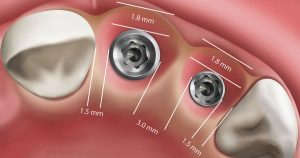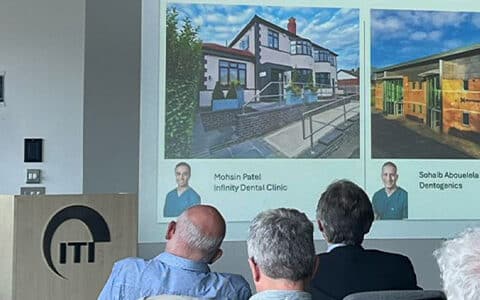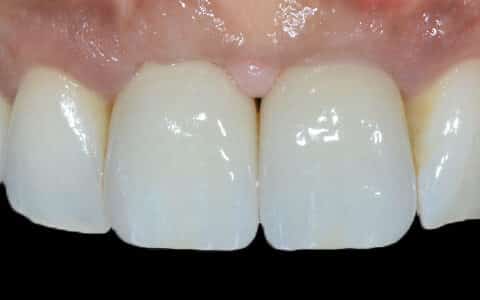My journey into the world of digital dentistry has been long in terms of the experience I have already gained. Yes, the learning curve is steep, but it’s also surprisingly quick.
We use intra-oral scanning, CBCT scanning and digital planning software to enable us to plan our dental treatment with as much precision and accuracy as is possible. Without using these techniques, we would still be able to perform the treatment however, it wouldn’t be with the same level of accuracy.
Improving the long term success of Dental Implants
The biggest improvement is seen in implant dentistry. This is because the long term success of implants is heavily influenced by the anatomical positioning of the titanium implant. This means that the distances between the bony margins, adjacent teeth and the dental implant must be in the optimum range which is usually as specific as fractions of a millimetre!
We are able to precisely plan the placement of the dental implant on the computer with reference to the anatomy from the CBCT scan. The implant is planned to be placed in the safest and most effective position with reference to the neighbouring anatomy and structures. The challenge then is to replicate that exact information into the patient’s mouth with absolute accuracy. Doing this surgery freehand will allow a skilled surgeon to place the implant in a very closely accurate position but on a microscopic level, it will usually not be an exact replica.
Since we have been working with the digital work flow, I have found that we can get that absolute accuracy consistently. We can get the implant to go exactly where we’ve positioned it on that CBCT scan and that level of accuracy means the post op X-ray will look identical to the preoperative plan on the CT scan. For me that means the implant will be exactly where we want it to be every time. Also, it will theoretically be in the most optimum zone when taking neighbouring anatomical structures into account for the best long-term outcomes for that patient and that particular implant.
So, although early success rates, measured over five years possibly are not going to be influenced significantly between digitally-aided implant placement, or freehand-aided implant placement, I truly believe the long-term outcomes will show the consistency we achieve from using the digital work flow. Using digital work flow in this case will far exceed the success rates we now see in 10 or 15 years, when looking at the same number of implants placed using the freehand technique.
For us, the post-operative X-rays tell the real story. When we’ve audited our implants, we’ve seen that when using the digital work flow, the post-op X-rays are always identical, or as close to as you can get to our preoperative plan. As a surgeon that is something that we should all strive for, to achieve the clinical outcomes that we planned in the first place.
Thank you for reading,
Mohsin Patel BDS MJDF RCS (Eng)
Talk to us
Please fill out the form below with your enquiry or you can call us on 0113 2633199. You can even pop in to the clinic.
"*" indicates required fields
Related articles...
Book a Consultation
At Infinity Dental Clinic we see patients for routine dental check-ups with our dentists. Regular dental maintenance and good oral hygiene will ensure that you keep your teeth and gums healthy.
Book a Consultation












